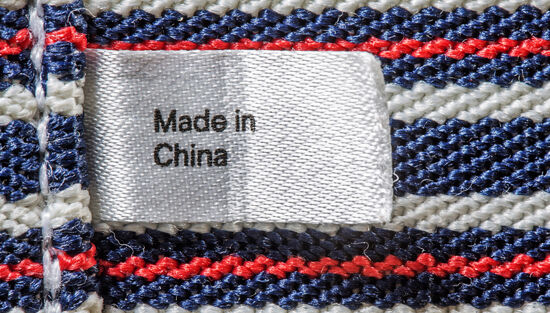Bernd Zipper at Zipcon: AI, e-commerce and the new DNA of print

Club FESPA Online speaks to Bernd Zipper – one of the leading consultants for the transforming print industry – and ask him what the future holds.
When it comes to identifying emerging – or even long-distant – trends in the print industry, Bernd Zipper has impressive experience. From his early days exploring the possibilities of PDFs and coining the term ‘web-to-print’, to being founder and CEO of Zipcon Consulting, the President of the Initiative Online Print e.V. and co-organiser of the Online Print Symposium, Bernd is often found at print’s frontier, looking forward.
And there’s arguably never been a more important time for pioneers like him.
“Everything we had in mind regarding how to make money with print has changed dramatically over the last few years. How we make money now is not to print as much as we can, but to print as reliably and responsibly as possible,” Bernd says.
How printers should react to the changing of these rules can be found in areas like mass customisation.
Toner and digital printing came, and inkjet came, but it is still the same business model: printers have a big machine, and they sell what they print to a customer. This is wrong
“I have been involved in mass customisation since the beginning of DTP. Printing on demand and such concepts are now part of the market and, in the Western world, are a way to make money,” Bernd says.
“In other areas, such as India or Asia or Eastern Europe, maybe there is still the opportunity to print cheaply. But in expensive countries like France or the UK or the US, mass customisation and printing on demand is most important, and we can see that the first companies offering this are really making money out of it. Mass customisation is here and that has changed print dramatically.”
Omni-channel commerce
It’s not just printing processes that have changed: the way printers interact with their potential customers is also now subject to a different landscape.
“We’ve never had so many chances to sell our goods. Never!” Bernd says. “For example, just selling via web-to-print or via an e-commerce shop is not enough. You must also be present on social media, send mailouts, and have some key accounts for bigger customers. So omni-channel is the buzz concept of the moment and if we can understand that, then we can sell print faster than we ever could before.”
While some people are eager to declare the death of print, nothing could be further from Bernd’s thoughts. However, to take advantage of current opportunities, it requires a mindset change in the way we think about parts of our businesses.
“The biggest issue with printers’ DNA is that they are still in the 1960s. They are still at the point where they saw something like offset printing, and they are excited by the idea of starting to put ink on paper and to sell it to customers. Toner and digital printing came, and inkjet came, but it is still the same business model: they have a big machine, and they sell what they print to a customer. This is wrong,” Bernd says.
Software solutions are the operating system of a whole printing company. If we don’t understand that as a printer, we will not survive
“We must open our minds in the printing industry. We must understand that technology doesn’t end at the machine. The whole company needs its own operating system and our ERP [enterprise resource planning] system, our online shop, our web-to-print, our customer information system – everything needs to combine as one big platform, and then behind that we have the machine.
“Therefore, we must change how printers think regarding machines and ensure they also focus on software solutions, because they are the operating system of a whole printing company. If we don’t understand that as a printer, we will not survive.”
Putting people first
Of course, when one thinks about software and digital solutions, it’s hard not to ask about the most pressing topic of the day: artificial intelligence. Bernd says that, for now – while AI still can’t work truly independently – human resources are potentially more important.
“I use AI as a tool in everyday use. I use AI with my phone. It’s everywhere. But it is a tool at this point. We understand that we are in the age of generative AI, but right now it is not a superior form of AI, and to be honest, we can be grateful for that.” Bernd says.
If a printer was to ask me what they should do next, I would say: search for young talent
“For years we’ve been using AI or AI-like processes in the printing industry to develop new workflows and to optimise workflows. In those cases, AI is really helping us to find new ways to produce faster, more reliable, more professionally with more efficiency.
“But if a printer was to ask me what they should do next, I would say: search for young talent. They don’t have to be printers, although it helps if they are passionate about print, but you will always find a way that they can help you, whether that’s bringing AI to the company, setting up an online shop, or being more modern. But 50% of the printer shops that I visit are still functioning as though they are back in the 1960s.”
Another area where younger influence can have an important role is with the adaptation to sustainable printing – an area that already complements with Bernd’s interest in print-on-demand.
“There is still so much to do when it comes to sustainability. I love print but I hate unnecessary print,” Bernd says.
“I really want print to be sensible and the whole sustainability standpoint is right. We must think about what we can do with colour, with de-inking. What are we doing with paper and how do we produce it? While sustainability is not my favourite topic, it is necessary, just as a machine is necessary. It is part of print’s new DNA and that is one of the reasons why I love the idea of printing only what we need.”
Old and new technologies
The culmination of Bernd’s interest in print-on-demand, sustainability and his initial printing fascination – letterpress – has brought him to his latest passion: integrating into modern, digital workflows older machines capable of unique high-quality printing.
“I never learned to print in the traditional way, but the first machine I used was a Heidelberg machine that wasn’t digital. Those machines, from the 1970s – 1990s can’t be integrated into a digital workflow and we still need those machines because – even though we have digital laser cutting and embossing and all those things – people still love traditional print,” Bernd says.
“My biggest passion now is to feature old machines and old technologies into a modern workflow to enable them to be relevant to a digital society. There is one company in Germany, called Tessitura, that can fit sensors to an old machine and bring it into a digital workflow. In combination with a modern ERP system like Keyline or something similar, it really is possible to set up a system in an online shop that will work a letterpress machine.
“This is amazing, because with that you have a very valuable print. If you have ever had a letterpress business card or invitation, you know that it is valuable print, and making print valuable again making print valuable again is the mission of our industry. Print should not be something you throw away. It needs to be sustainable and affordable, but we need to understand and promote the idea that print is valuable communication.”
Become a FESPA member to continue reading
To read more and access exclusive content on the Club FESPA portal, please contact your Local Association. If you are not a current member, please enquire here. If there is no FESPA Association in your country, you can join FESPA Direct. Once you become a FESPA member, you can gain access to the Club FESPA Portal.
Recent news

Regulation guidance: Corporate Sustainability Reporting Directive
The Corporate Sustainability Reporting Directive (CSRD) is now in effect, but with further changes on the horizon, what does it mean for printers? Sustainability consultant Rachel England outlines everything you need to know and talks to Apigraf about how your business may be affected.

Web-to-print design: Canva versus Kittl
We look at popular design packages Canva and Kittl to determine how they compare regarding graphic design and print on demand.

FESPA in South Africa: the print skills to thrive
Printing SA’s Career Day inspired young Cape Town learners to explore printing and packaging careers.

The rise of Chinese printers
Chinese printing companies are on the rise, and have their eyes set on the UK and EU marketplace. Some have made an instant impact; others are running into issues with maintenance and language barriers. What does the future hold for Chinese printing firms, and how can you navigate working with them?